A Day in Salamanca, Spain's Golden City

Hello friends, during our trip to Spain, one of the cities we visited was Salamanca. Why Salamanca? Because I liked the name, so I decided to come here and see this city. It looks quite interesting too. Naturally we started our tour at Plaza Mayor, as almost every city here has a main square and Salamanca is no exception. In fact many people say that this is the most beautiful Plaza Mayor, even claiming it can compete with Madrid’s Plaza Mayor in terms of beauty. It’s hard to say for sure, but I'm not certain if it can really compete. Still it’s an interesting place. It was built in the 18th century, so considering the age of the city, it’s relatively recent. It’s in Baroque style naturally because Baroque was in fashion at that time.



The square is almost a perfect square, surrounded by buildings with the same design and architecture on all sides. The only difference is the central part, which is the town hall. The ground floor there is slightly higher. Below there are arcades, as is common in Spanish cities, to provide shade. When we visited, it was cold. Not freezing, of course, but it gets quite hot in the summer as this is a city located in the center of Spain. Among these arcades or between these arches, there are reliefs of great Spanish figures. Primarily emperors and empresses kings and queens, but also other religious leaders, scientists and explorers. As for the town hall it’s quite interesting too, with four statues at the top representing justice, wisdom, courage and temperance. These seem to be the most valued virtues in Salamanca. Salamanca is located in the autonomous community of Castile and León, a region that has historically hosted many interesting events. However, the history of the city begins with settlements in this area dating back to 5th century bc. Of course, the Romans later came here and many interesting things happened.





By the way there are several entrances to the square, located at the corners and some in the middle. When we visited, the square was mostly filled with tourists and people relaxing and there were various cafés. But in the past this square was used for various events, including bullfights. Of course, watching bullfights from the balconies must have been quite comfortable. I stayed at a small hotel very close to Plaza Mayor. To be honest the hotel doesn't offer much beyond the location, but it was clean and tidy. It looked a bit old, but it was good enough for one night. Another big advantage of the hotel was that it was right next to the market. The market is one of the main attractions in every good Spanish city, so I definitely wanted to stop by.
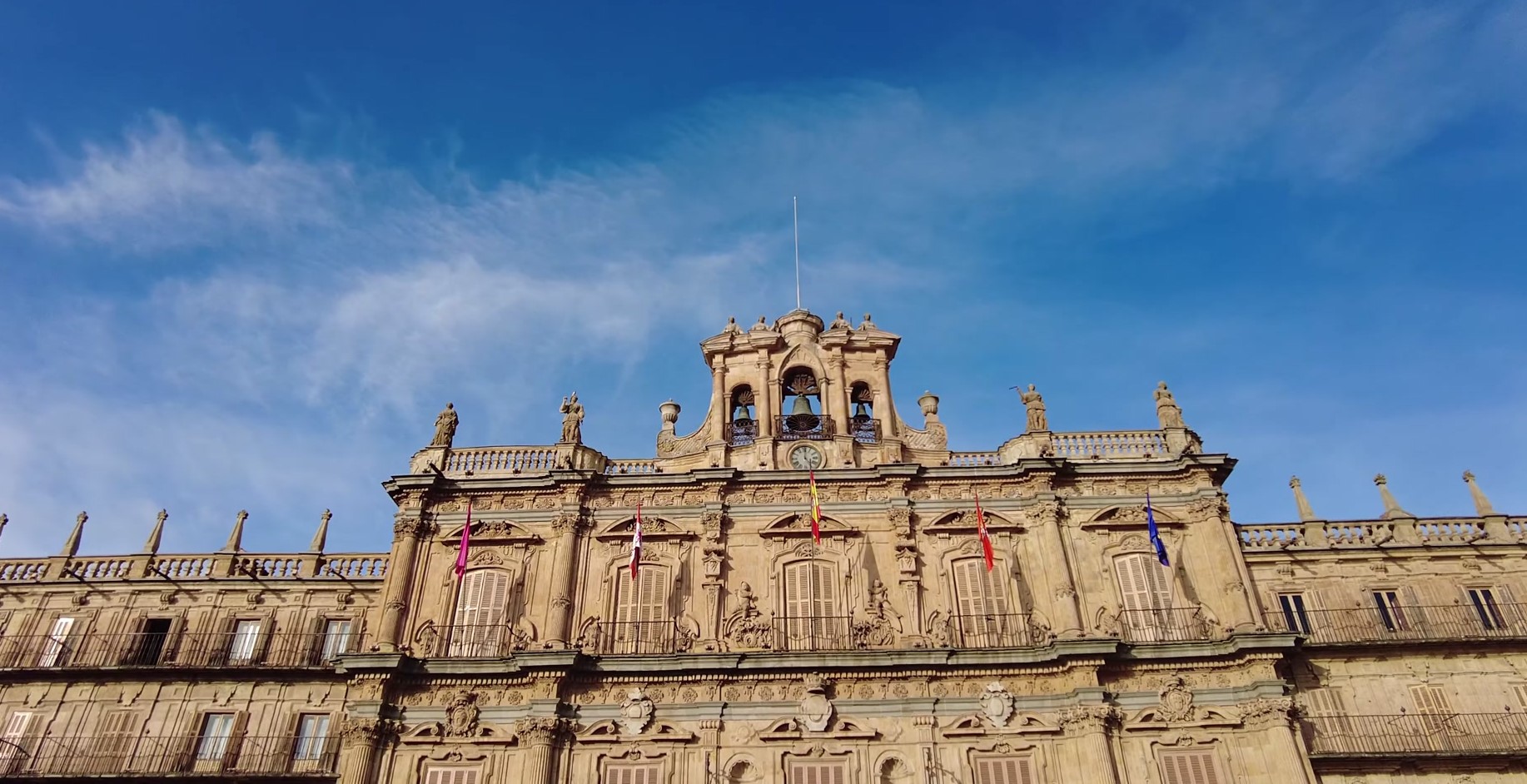



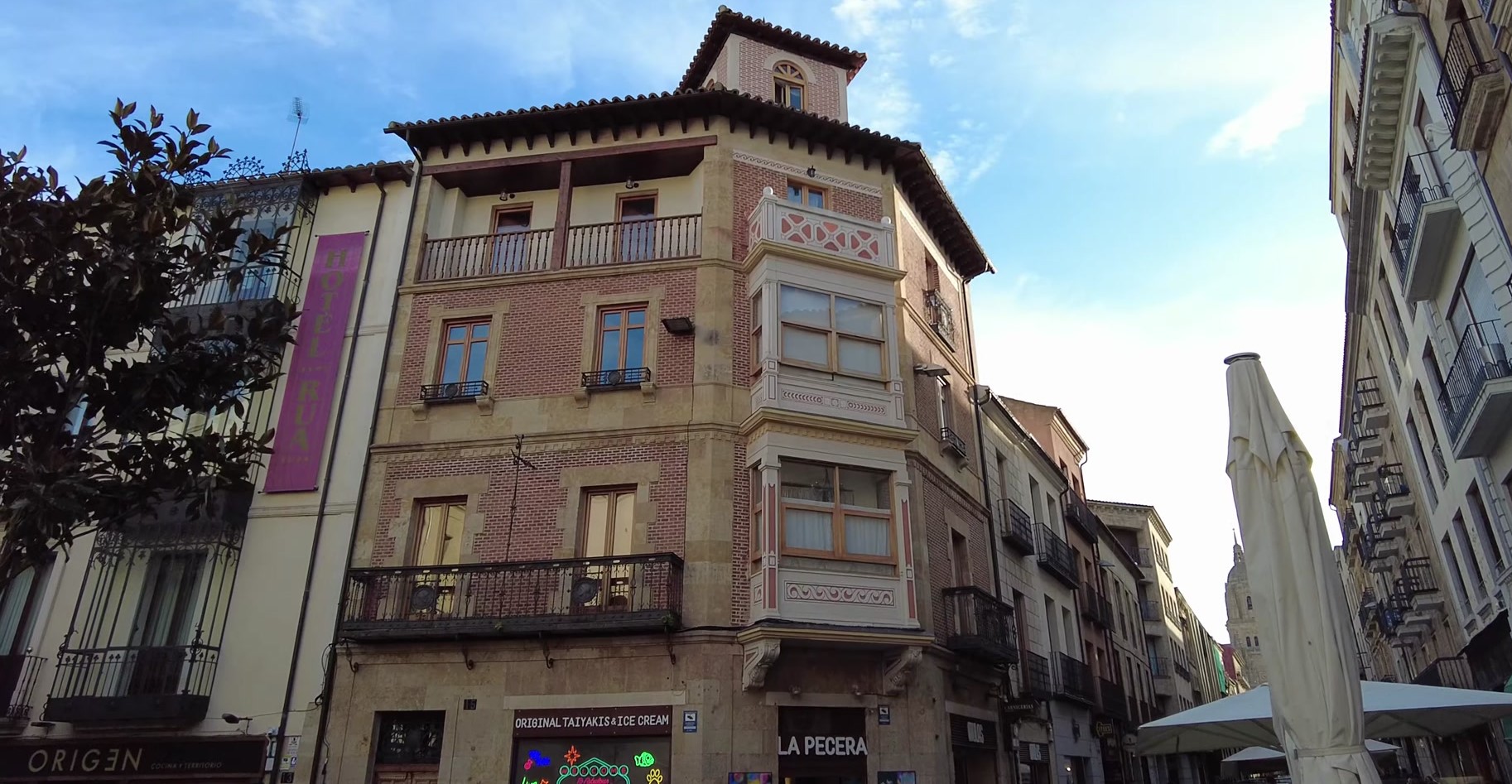




One of Salamanca's tall buildings is Iglesia de la Clerecía, formerly known as the Jesuit College Church. However, after some time the Jesuit Order left and now the University is located here. Speaking of Salamanca’s university, I wanted to mention it because it’s one of the city’s most important attractions. The University of Salamanca is one of the oldest universities in Spain and is known as one of the oldest universities in the world. There is a tower in the church called Scala Coeli and you can climb up.




Across the street is a quite interesting building, made unique by being adorned with 300 scallop shells. The owner of this building was Don Rodrigo Maldonado de Talavera, a knight of the Order of Santiago, also known as the Order of Saint James. Salamanca is one of the places along the Camino de Santiago. It is also said that gold coins are hidden under these scallop shells. However, since they are placed quite high, I doubt anyone could easily take them down and check. Currently there is a public library in this building and the inner courtyard is open to visitors. It’s definitely worth seeing and its two-story gallery is also decorated with stone carvings.








The stone used in the construction of most buildings in Salamanca is also quite interesting. This local sandstone, quarried nearby, takes on different tones at different times of the day, giving the city a very unique appearance. We witnessed something similar in Valletta. It really has a mystical quality. It is said that at sunset, this sandstone takes on a golden hue. One of Salamanca's popular nicknames is La Dorada meaning The Golden City or The City Made of Gold.



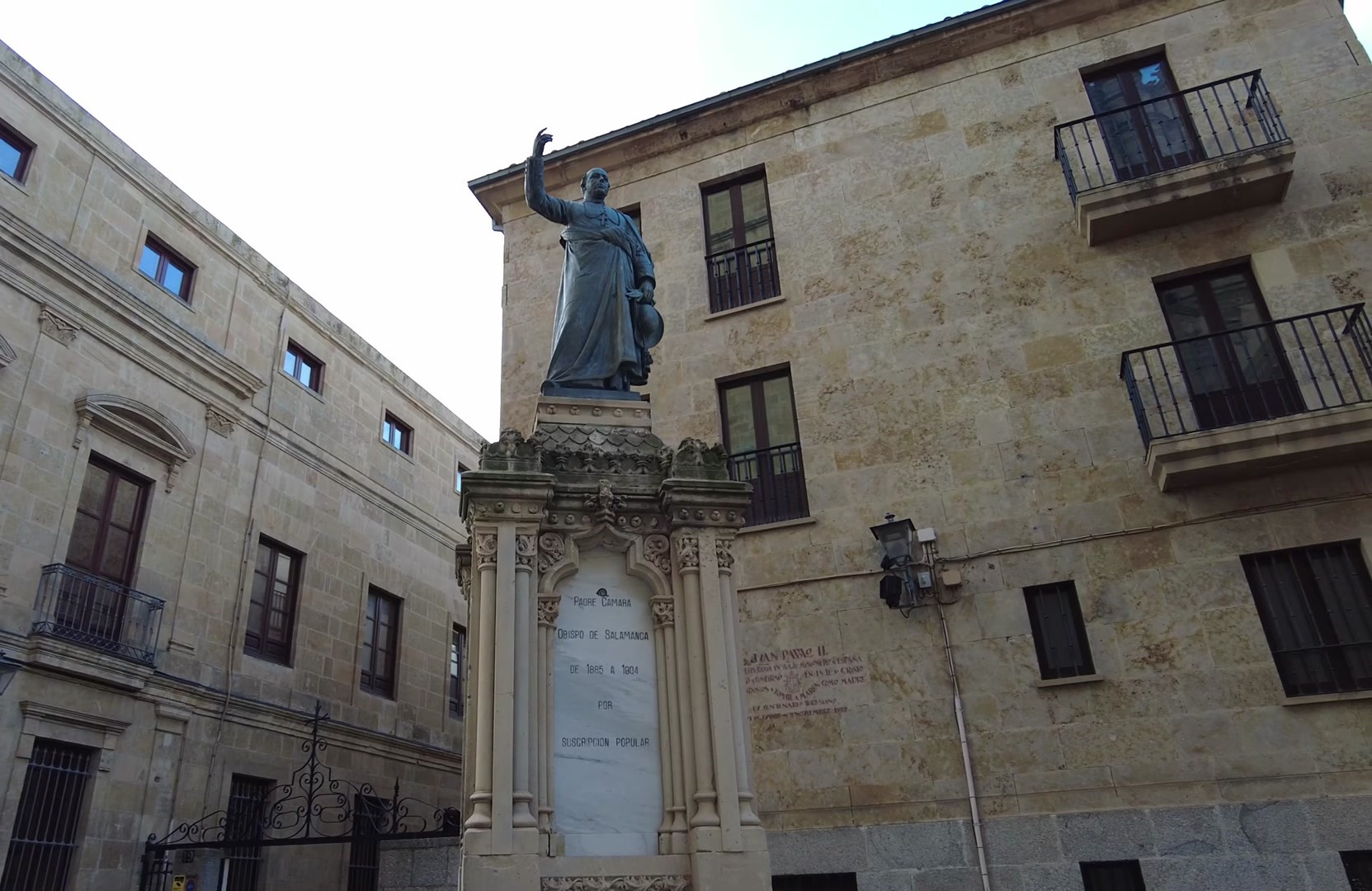

Next we arrived at Salamanca's most important attraction, the historic university building. The university originated here. Initially, a religious school was established in the 12th century and then in the early 13th century, the university was officially founded. This makes it one of Spain's oldest universities and one of the oldest in the world. Depending on the source it is considered the third, fifth, or fourth oldest university in Europe, but it is undoubtedly among the top five.



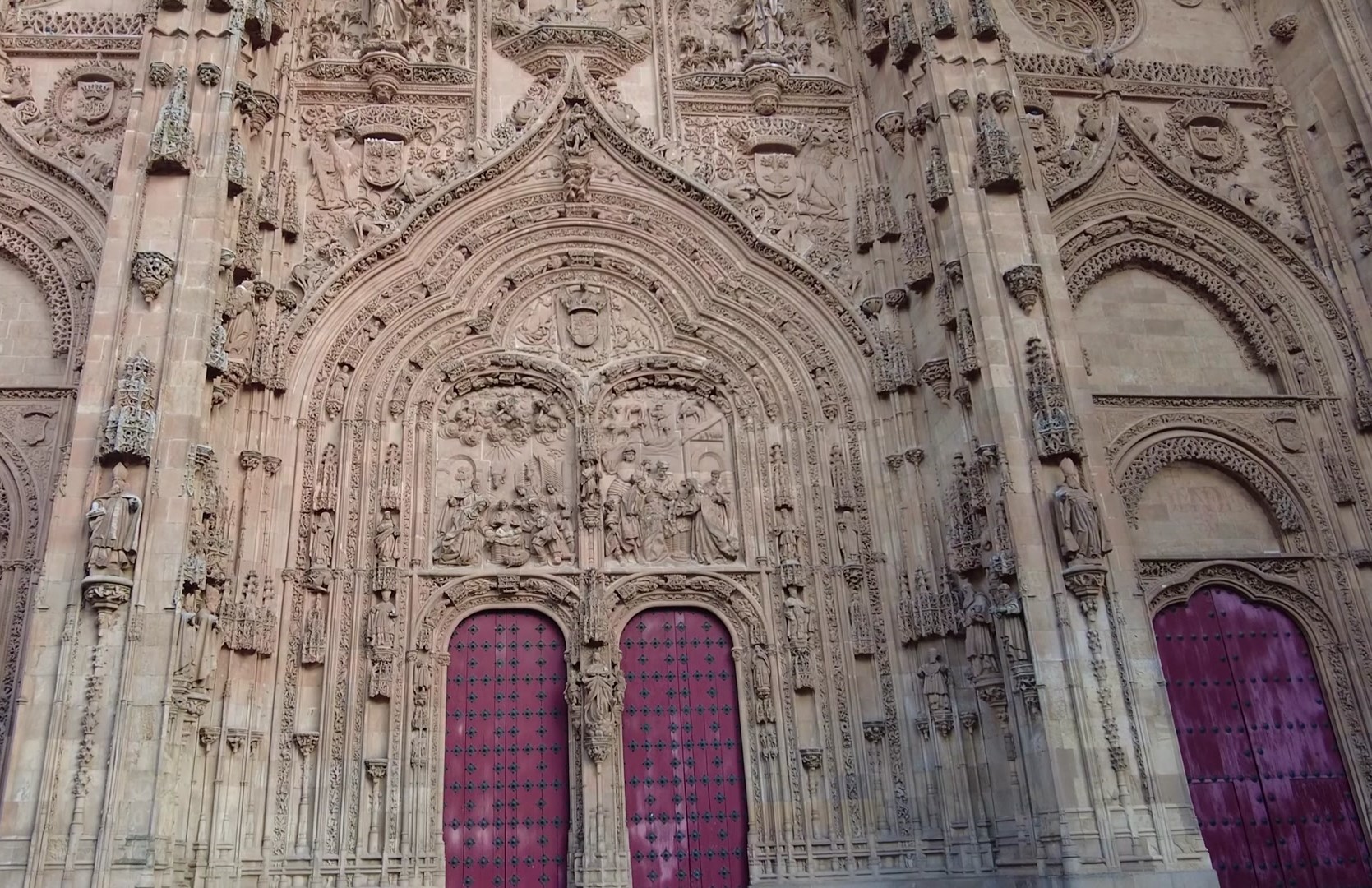
What sets this building apart is its remarkable decoration. This decoration is an example of the intricate stone carving characteristic of the Renaissance period, which can also be seen in many other buildings in Salamanca. This fine stonework in the Renaissance style is a prominent art movement in Spain.



The famous Silver Route passed through Salamanca, the same road we encountered in Cáceres. Cáceres is located further south from here and along this route, silver and various crafted goods were transported. This aesthetic influence is reflected in many structures including the university. There's a small secret about this stonework: on the second floor of the right column, there are a few small skulls and on one of these skulls, a frog sits. According to legend, if students find this frog, they are guaranteed to pass their exams. whether it's an entrance exam, midterm or final. However, locals claim that this story isn't entirely accurate and was made up by lazy students. The real story is this: throughout history, the frog has been a symbol of lust and it faces towards the university, implying that if students become too engrossed in earthly pleasures and neglect their studies, death awaits them. That’s why the frog sits atop a skull.


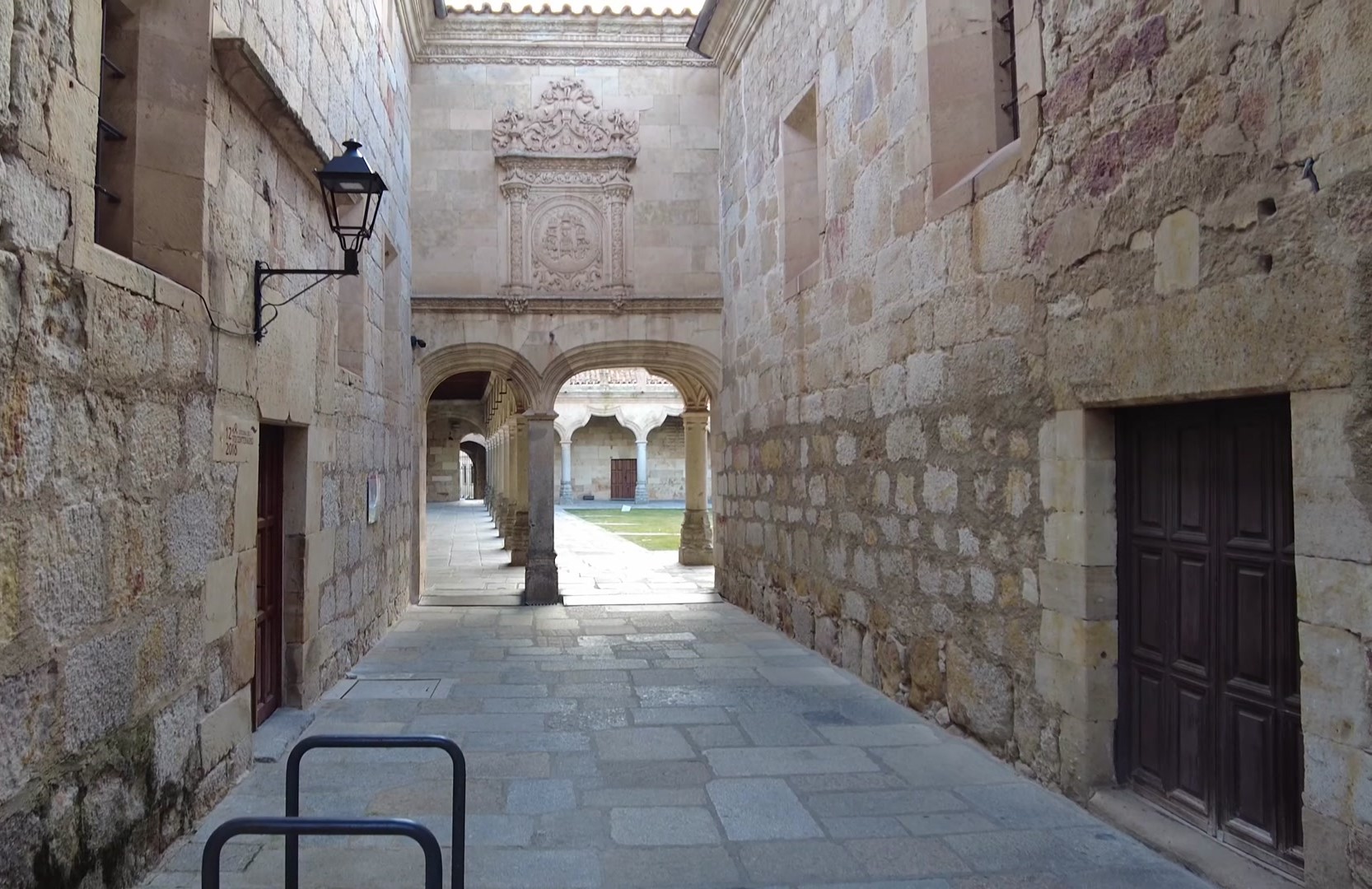

And attention should be paid to the walls of the courtyard in front of the university's historic building entrance. These walls are filled with inscriptions written in red paint. These writings commemorate significant achievements of professors and students. They were made using bull's blood, which is why some have faded over time, while others have partially disappeared. Many historical buildings in Salamanca have these brownish-red inscriptions on their walls. The Pontifical University and the public library are also marked in the same style.








One of Salamanca's oldest structures is the Roman Bridge. It is now used as a pedestrian bridge, but it was originally built in the 1st century bc. This bridge was constructed to transport silver caravans to the port of Cádiz and then to Rome. The bridge was quite large, with 26 arches, although far fewer have survived to the present day. A major flood in 1660 destroyed part of the bridge, but it was later repaired and has reached us in relatively good condition. The modern city lies in front of the bridge, while the historic city is behind it. Unfortunately, when we visited the weather was cloudy, so we couldn’t witness a golden sunset. From the bridge, you can see both the old and new cathedrals. In this enchanting golden city, traces of the past can be found around every corner. If you ever find yourself in Spain, I highly recommend visiting Salamanca.



Congratulations, your post has been added to the TravelFeed Map! 🎉🥳🌴
Did you know you have your own profile map?
And every post has their own map too!
Want to have your post on the map too?
- Go to TravelFeed Map
- Click the create pin button
- Drag the marker to where your post should be. Zoom in if needed or use the search bar (top right).
- Copy and paste the generated code in your post (any Hive frontend)
- Or login with Hive Keychain or Hivesigner and click "create post" to post to Hive directly from TravelFeed
- Congrats, your post is now on the map!
PS: You can import your previous Pinmapple posts to the TravelFeed map.Opt Out
Congratulations, your post has been added to WorldMapPin! 🎉
Did you know you have your own profile map?
And every post has their own map too!
Want to have your post on the map too?
Woah! The buildings are so beautiful. The Roman bridge really is old. Built in first century bc? Wow and is still serving as a bridge for pedestrians? That’s so cool.
Thank you. Yes, it's amazing that the Roman bridge is still in use today for pedestrians.😊
City, buliding , architecture looks so beautiful... amazing pictures 😍
Thank you so much. I'm glad you enjoyed the photos. The architecture in this city is really impressive. Happy you liked it 😊
Yeah..it is beautiful
Congratulations @larissalugo! You received the biggest smile and some love from TravelFeed! Keep up the amazing blog. 😍 Your post was also chosen as top pick of the day and is now featured on the TravelFeed front page.
Thanks for using TravelFeed!
@for91days (TravelFeed team)
PS: Did you know that we have our own Hive frontend at TravelFeed.com? For your next travel post, log in to TravelFeed with Hive Keychain or Hivesigner and take advantage of our exclusive features for travel bloggers.
Hiya, @ybanezkim26 here, just swinging by to let you know that this post made it into our Top 3 in Travel Digest #2303.
Your post has been manually curated by the @worldmappin team. If you like what we're doing, please drop by to check out all the rest of today's great posts and consider supporting other authors like yourself and us so we can keep the project going!
Become part of our travel community:
One of my dreams is to be able to visit this place. Hopefully it can come true as soon as possible.
Thank you for your comment. I really hope your dream comes true soon. This place is even more magical in person. Wishing you a wonderful visit in the near future
Congratulations @larissalugo! You have completed the following achievement on the Hive blockchain And have been rewarded with New badge(s)
Your next target is to reach 7000 upvotes.
You can view your badges on your board and compare yourself to others in the Ranking
If you no longer want to receive notifications, reply to this comment with the word
STOPOh, thank you so much 😊 I’ve been busy with work, but from now on I’ll put in more effort and work toward reaching my goals. 💪
You're welcome @larissalugo.
BTW, may we ask you to support our proposal so our team can continue its work?
You can do it on Peakd, ecency, Hive.blog or using HiveSigner
https://peakd.com/me/proposals/248
Thank you.